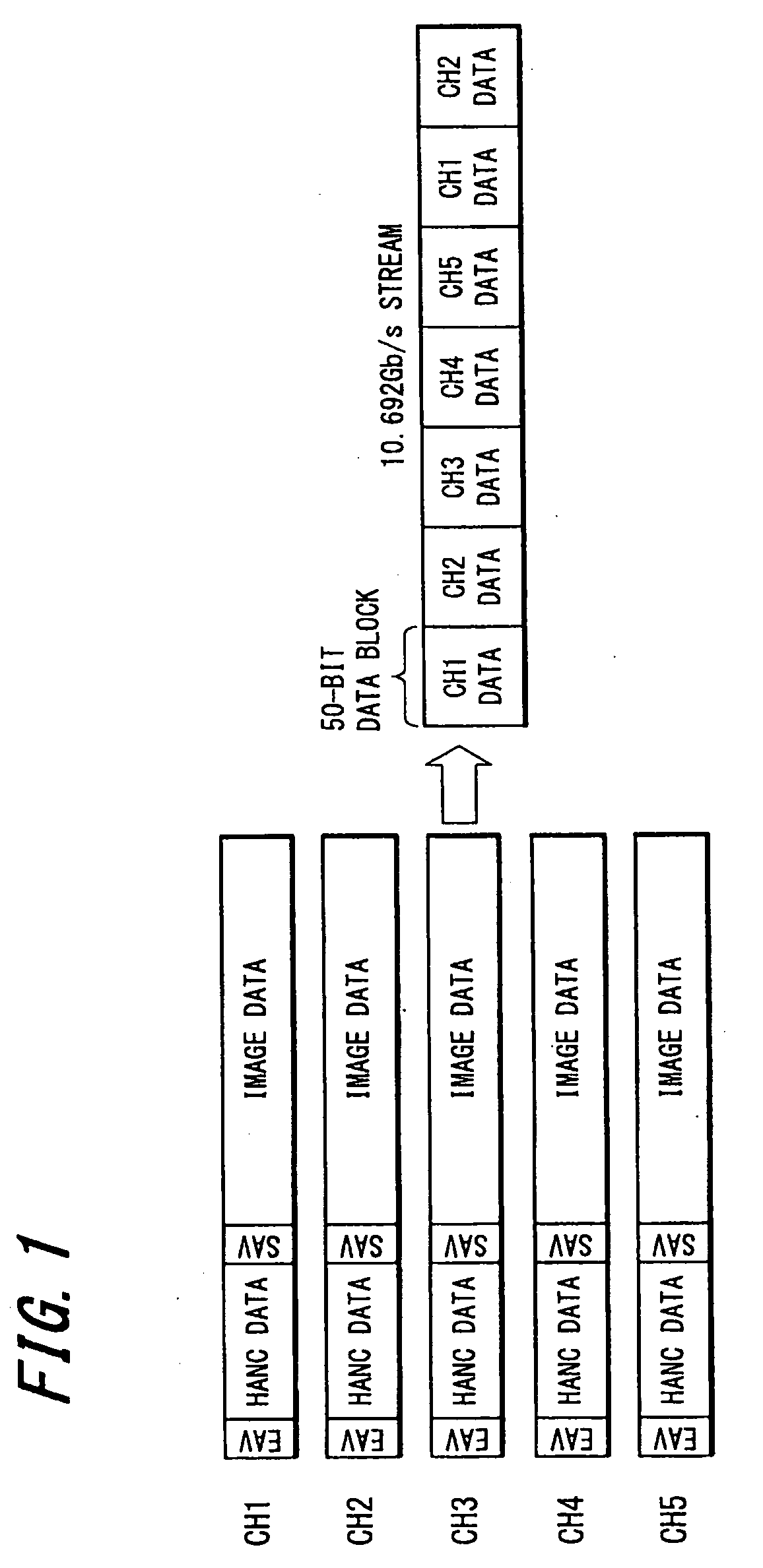Signal transmission apparatus and signal transmission method
a signal transmission apparatus and signal transmission technology, applied in the field of signal transmission, can solve the problems of complicated construction of synchronization processing, and insufficient transmission rate for super-high definition image signals
- Summary
- Abstract
- Description
- Claims
- Application Information
AI Technical Summary
Benefits of technology
Problems solved by technology
Method used
Image
Examples
first embodiment
[0065]the present invention will now be described with reference to FIGS. 6 to 19.
[0066]FIG. 6 is a diagram showing the overall construction of an image transfer system for television broadcasting according to an embodiment of the present invention. This image transfer system is constructed of a plurality of broadcasting cameras 1 and a CCU (camera control unit) 2, with the respective broadcasting cameras 1 being connected to the CCU 2 by fiber optic cables 3.
[0067]The broadcasting cameras 1 have the same construction, and each functions as a signal transmitting apparatus that generates and transmits, as a 4 k×2 k signal (a super-high resolution signal with 4 k samples on 2 k lines), a 4096×2160 / 24P / 4:4:4 / 12-bit signal for Digital Cinema.
[0068]The CCU 2 is a unit that controls the broadcasting cameras 1, receives image signals from the respective broadcasting cameras 1, and transmits an image signal (“return video”) for displaying images being picked up by another broadcasting camer...
second embodiment
[0172]Next, an example operation of the mapping unit 11 according to the present invention will be described with reference to FIGS. 20 to 28.
[0173]Here, a method of multiplexing 3840×2160 / 24 / 1.001P, 24P, 25P, 30 / 1.001P, 30P / 4:2:2 or 4:4:4 / 10-bit, 12-bit pixel samples using Mode D defined by SMPTE 435 will be described.
[0174]FIG. 20 is a block diagram showing a signal transmitting apparatus 31 that relates to the present embodiment out of the circuit construction of the broadcasting camera 1. A 3840×2160 / 24 / 1.001P, 24P, 25P, 30 / 1.001P, 30P / 4:2:2 or 4:4:4 / 10-bit, 12-bit signal generated by the image pickup unit and the image signal processing unit (not shown) in the broadcasting camera 1 is input to the mapping unit 11.
[0175]The 3840×2160 / 24 / 1.001P, 24P, 25P, 30 / 1.001P, 30P / 4:2:2 or 4:4:4 / 10-bit, 12-bit signal is a 36 bits wide signal in which a G data series, a B data series and an R data series, each 12 bits wide in word length, are synchronized and aligned in parallel to each othe...
PUM
 Login to View More
Login to View More Abstract
Description
Claims
Application Information
 Login to View More
Login to View More - R&D
- Intellectual Property
- Life Sciences
- Materials
- Tech Scout
- Unparalleled Data Quality
- Higher Quality Content
- 60% Fewer Hallucinations
Browse by: Latest US Patents, China's latest patents, Technical Efficacy Thesaurus, Application Domain, Technology Topic, Popular Technical Reports.
© 2025 PatSnap. All rights reserved.Legal|Privacy policy|Modern Slavery Act Transparency Statement|Sitemap|About US| Contact US: help@patsnap.com



